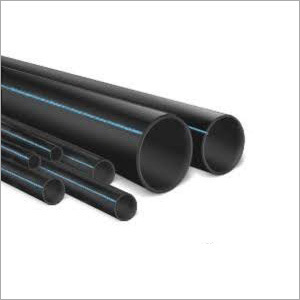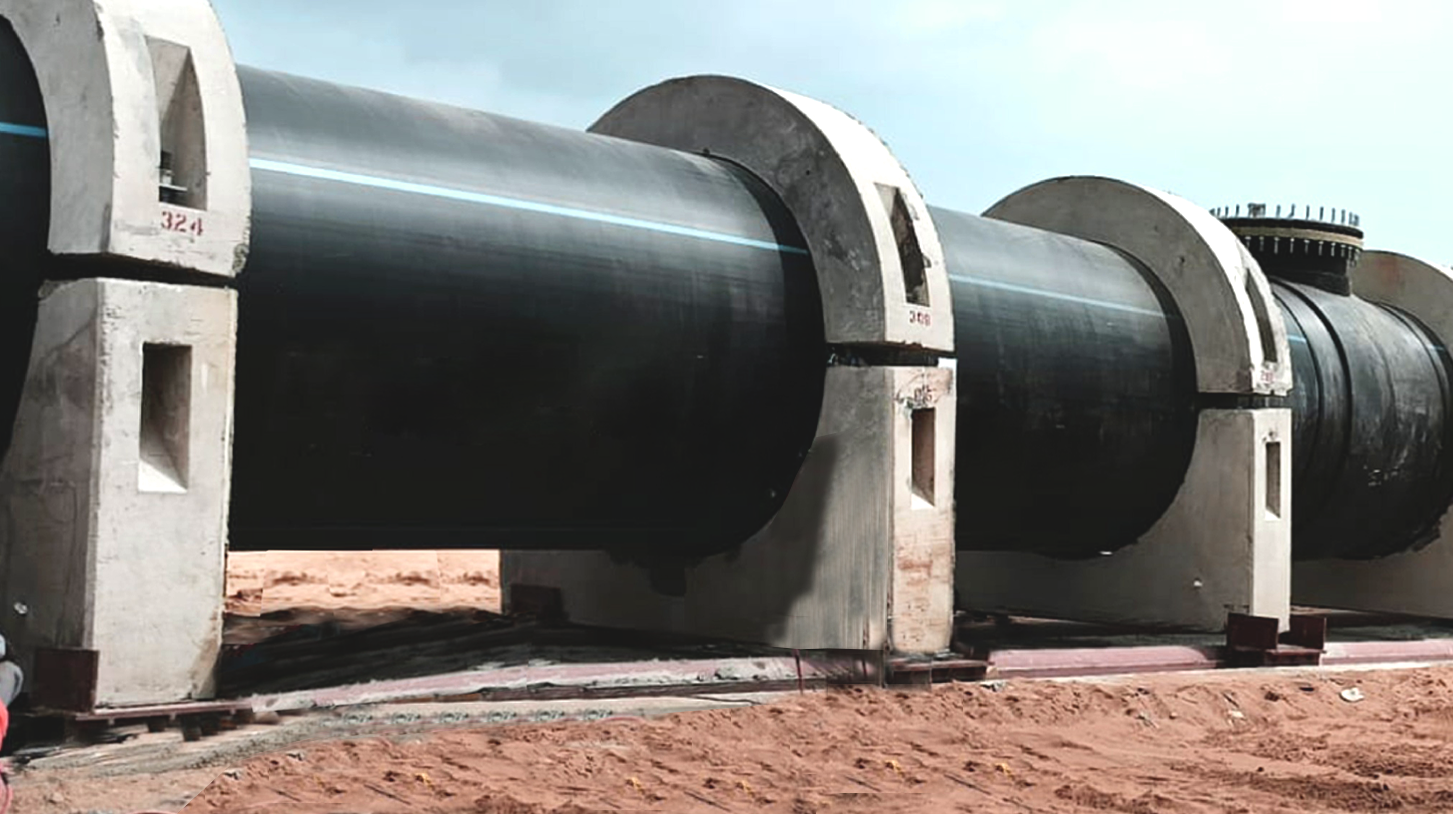custom hdpe pipe manufacturing Midland TX: Trends Shaping the Market
The Vital Actions for Effective Installment of HDPE Pipeline in Your Next Project
Effective setup of HDPE pipe requires cautious preparation and execution. Key steps consist of reviewing project requirements, preparing the site, and choosing proper joining strategies. Each stage plays an essential role in making sure the integrity and performance of the pipe. Comprehending these necessary actions can considerably affect the general success of the task - hdpe pipe suppliers Midland TX. Nonetheless, the subtleties of each action may hold the key to getting rid of typical challenges encountered throughout installment
Recognizing the Perks of HDPE Pipeline
High-density polyethylene (HDPE) pipeline uses various advantages that make it a preferred choice for numerous applications. Its high resistance to deterioration and chemicals assurances toughness sought after settings, significantly expanding the life-span of setups. Additionally, HDPE's adaptability enables easier setup, specifically in tough surfaces, as it can flex without breaking. The lightweight nature of HDPE pipeline streamlines transport and handling, minimizing labor expenses throughout setup.
Additionally, HDPE pipeline is known for its reduced rubbing coefficient, which enhances liquid circulation and minimizes power usage. Its smooth building minimizes the danger of leakages, adding to far better source administration and environmental protection. On top of that, HDPE is recyclable, straightening with lasting methods and lowering environmental impact. On the whole, the mix of toughness, flexibility, and eco-friendliness makes HDPE pipeline a superior option for a vast array of tasks, from water distribution to commercial applications.
Preparation Your HDPE Pipeline Installation
When intending a setup of HDPE pipeline, cautious factor to consider of a number of key aspects is crucial to safeguard a successful project. Task supervisors have to examine the details needs of the pipeline, consisting of the intended usage, circulation prices, and ecological conditions. Comprehending these specifications will certainly guide the option of suitable pipeline measurements and material quality.
Next, timelines ought to be established, considering procurement timetables and any kind of possible hold-ups. Control with neighborhood authorities for licenses and regulative conformity is likewise necessary. Additionally, a thorough budget must be prepared, encompassing all costs connected with materials, labor, and machinery.
It is important to involve a qualified team experienced in HDPE pipe setup. Their know-how will help alleviate dangers, assurance adherence to sector standards, and ultimately contribute to the task's success. Thorough planning lays the groundwork for a smooth setup process and resilient performance of the HDPE piping system.
Preparing the Website for Setup
Correct website preparation is necessary for the effective installation of HDPE pipeline. Before installation starts, the site should be extensively analyzed to assure it fulfills all required demands. This consists of checking the ground for existing frameworks, utilities, and possible risks that can hamper the setup procedure.

Proper altitude and alignment should be developed to preserve a constant slope for water drainage objectives. Proper drain around the installment site is additionally critical to avoid water accumulation, which can cause difficulties down the line.
Techniques for Signing Up With HDPE Water Lines
Accomplishing a reliable link in between HDPE pipelines is crucial for making sure the integrity and longevity of the setup. Various methods exist for signing up with these pipelines, each matched for various job needs. Combination welding is just one of one of the most common methods, making use of heat to bond the pipeline finishes together, producing a seamless and durable connection. This method can be additional classified into outlet combination and butt blend, relying on the pipe configurations.
Mechanical fittings are another option, employing clamps and threaded ports to join areas of HDPE pipeline. While typically faster to mount, they may require extra maintenance with time. Electrofusion is a specific method that involves using electrical present to warm and fuse the pipes with specially made installations, ensuring a solid bond. Picking the ideal joining strategy is crucial, as it directly affects the overall efficiency and dependability of the HDPE piping system in the desired application.
Examining and Evaluation of Installed Pipeline
The screening and inspection of mounted HDPE pipelines are essential to guaranteeing their functionality and long life. This process incorporates aesthetic assessment methods, stress screening techniques, and leakage detection procedures to recognize potential problems. By using these techniques, professionals can verify the honesty of the installation before it is placed into usage.
Visual Examination Techniques
Employing effective visual inspection strategies is vital for assuring the stability of set up HDPE pipelines. Examiners should methodically analyze all visible sections of the pipe to identify any kind of indicators of damage, misalignment, or incorrect installation. Key indications to analyze consist of joint stability, surface irregularities, and links. Assessors may use tools such as magnifying glasses or electronic cameras to boost visibility and detail. It is important to look for indications of ecological anxiety, such as buckling or extreme flexing, which can jeopardize performance. Consistent documentation of searchings for permits tracking changes over time and helps overview required repairs. By sticking to well established aesthetic examination procedures, project teams can notably minimize the threat of future failings and assure lasting integrity of the piping system.
Pressure Evaluating Techniques
Visual examination offers as an initial measure, yet it is not enough by itself to ensure the performance of installed HDPE pipes. Pressure testing approaches are important for guaranteeing the integrity of these systems. Commonly, hydrostatic screening is used, where the pipes are filled with water and based on stress levels over the designated operating stress. This method helps identify weak points or prospective leaks. Pneumatically-driven testing can likewise be made use of, although it brings greater threats due to the compressibility of air. Regardless of the technique chosen, adhering to market requirements and safety and security protocols is vital. After carrying out stress tests, extensive documentation is needed to verify the outcomes and verify that the installation fulfills all functional needs prior to proceeding to the next stage of the project.

Drip Discovery Treatments
How can one guarantee that set up HDPE pipes are complimentary from leaks? Efficient leakage discovery procedures are essential to secure the stability of the system. Originally, visual examinations ought to be carried out, seeking indications of water build-up or dirt disintegration around pipeline joints. Following this, stress screening can confirm the system's stamina. An usual technique is the hydrostatic test, where water is presented under pressure, checking for decreases that suggest prospective leakages. Additionally, progressed modern technologies, such as acoustic sensing units or infrared thermography, can discover leakages that might not be visible. Regular surveillance and maintenance more contribute to the durability of HDPE pipelines, guaranteeing they remain leak-free throughout their operational life-span. Correct documentation of these procedures is important for conformity and future recommendation.
Maintenance Tips for Long-Term Efficiency
To guarantee the durability of HDPE pipes, establishing a normal examination schedule is important. This proactive technique enables for the very early discovery of prospective issues, minimizing pricey repair services. Furthermore, applying appropriate cleansing techniques will help preserve peak efficiency and stop accumulation that can impact functionality.
Normal Assessment Schedule
HDPE pipes are recognized for their resilience and resistance to rust, developing a routine evaluation routine is vital for ensuring their long-term efficiency. Regular examinations help determine possible issues such as leaks, joint integrity, and environmental effects that may impact the pipe's capability. It is recommended that examinations happen a minimum of biannually, or extra often in settings with extreme problems. American Plastics HDPE Pipe Manufacturing. Throughout these evaluations, visual checks need to be carried out to discover indications of wear or damage. Additionally, making use of innovation such as ultrasonic testing can supply additional insights into the pipeline's problem. By implementing an organized inspection timetable, job managers can proactively resolve issues, therefore prolonging the life expectancy of HDPE pipelines and maintaining system performance
Proper Cleaning Techniques
Proper cleaning strategies play a necessary duty in keeping the long-lasting performance of HDPE pipes. Normal cleaning protects against the build-up of debris, debris, and biofilm, which can lead to obstructions and minimized circulation performance. Operators must utilize methods such as high-pressure water jetting or foam cleansing to efficiently remove contaminants without harming the pipeline surface. It is important to stay clear of utilizing harsh chemicals that may deteriorate HDPE product. Furthermore, set up upkeep checks need to consist of visual examinations for any type of indications of wear or damages. Appropriately educated workers must perform these cleansing processes, ensuring compliance with security and environmental guidelines. By implementing these techniques, the life expectancy of HDPE pipelines can be considerably extended, making sure ideal efficiency throughout their functional life.
Regularly Asked Inquiries
What Are the Ecological Effects of HDPE Pipe Production?
The ecological impacts of HDPE pipe production include greenhouse gas emissions, energy consumption during production, potential plastic pollution, and challenges in recycling. HDPE's durability and resistance to deterioration can reduce some ecological problems.
How Does HDPE Pipe Compare to Other Materials?

What Equipment Are Necessary for HDPE Pipeline Setup?
Vital tools for HDPE pipeline installment consist of a combination maker, pipe cutters, shovels, measuring tape, and safety and security gear. Appropriate devices assurances efficient, secure handling and installment, adding to the project's general success and stability.
Exist Any Kind Of Details Laws for HDPE Pipeline Setup?
Details regulations for HDPE pipeline setup vary by area, commonly controlled by regional, get more info state, or federal codes. Compliance with these laws assurances safety and security, environmental management, and performance, making adherence essential for effective task end results.
Can HDPE Piping Be Recycled After Use?
Yes, HDPE pipes can be recycled after use. Their thermoplastic nature permits reprocessing, making them suitable for recycling right into brand-new products. This sustainability element adds to environmental preservation and promotes circular economic situation techniques in building and construction.